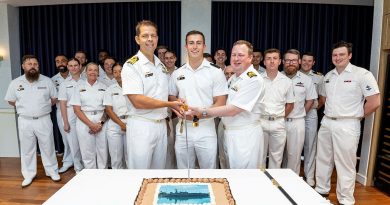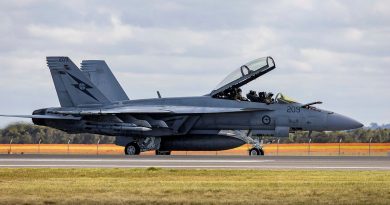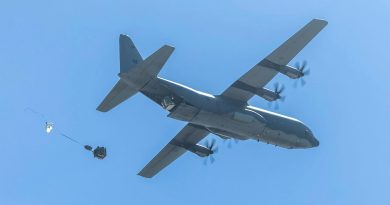RAAF tests decontamination drills

Air Force personnel put their chemical, biological, radiological and nuclear defence (CBRND) capability to the test during Exercise Toxic Safari.
CAPTION: The decontamination lane during Exercise Toxic Safari at RAAF Base Amberley.
Conducted at RAAF Base Amberley from October 22-25, units from Air Mobility Group and Combat Support Group conducted collective training in a realistic, yet safe environment.
The exercise focused on the processing of chemically contaminated personnel at an exchange airfield and how Combat Support Group would conduct decontamination operations in order to enable and sustain the forward movement of ADF personnel.
Commanding Officer No. 382 Squadron Wing Commander Stuart Wheal said the exercise was a great opportunity for different force element groups to deeply engage with each other.
“This activity was a good chance to work together, rehearse skills and develop a deeper understanding of each force element group’s requirements in CBRND situations,” Wing Commander Wheal said.
Corporal Kylee Ganzerla participated as a station operator and said she enjoyed being able to apply her training in a simulated environment.
“Operating a decontamination station in a CBRND environment while working alongside the Air Mobility Group and other Combat Support Group units was really rewarding,” Corporal Ganzerla said.
“It provided an opportunity to put the skills and knowledge I’ve been taught to use in a practical scenario, which showed just how effective the procedures can be.”
For Warrant Officer Gavin Durnford, who works in Combat Support Group’s Capability Development Cell, No. 382 Squadron’s participation in the exercise enabled Combat Support Group to further develop and refine Air Force’s CBRND procedures.
“No. 382 Squadron supported Combat Support Group and Air Mobility Group in meeting their exercise objectives and as a result have identified many lessons that will stand us in good stead for CBRND activities in the future,” Warrant Officer Durnford said.
Members from Combat Support Group’s Health Services Wing and No. 383 Squadron also participated in the collective training, while the RAAF School of Fire and Security provided role players to interact with the decontamination personnel.
“Our Air Force people really work well together, look at the decontamination lane as an example – it was made up of members from different units and force element groups, and they all meshed seamlessly,” Wing Commander Wheal said.
.
.
.
.
.
.

.
.





